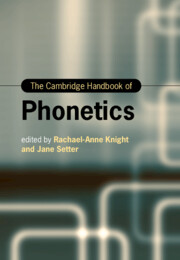Book contents
- The Cambridge Handbook of Phonetics
- Cambridge Handbooks in Language and Linguistics
- The Cambridge Handbook of Phonetics
- Copyright page
- Contents
- Figures
- Tables
- Contributors
- Introduction
- Section I Segmental Production
- 1 Physiological Foundations
- 2 Vowels
- 3 Consonants
- 4 Coarticulation
- 5 Processes in Connected Speech
- Section II Prosodic Production
- Section III Measuring Speech
- Section IV Audition and Perception
- Section V Applications of Phonetics
- Index
- References
5 - Processes in Connected Speech
from Section I - Segmental Production
Published online by Cambridge University Press: 11 November 2021
- The Cambridge Handbook of Phonetics
- Cambridge Handbooks in Language and Linguistics
- The Cambridge Handbook of Phonetics
- Copyright page
- Contents
- Figures
- Tables
- Contributors
- Introduction
- Section I Segmental Production
- 1 Physiological Foundations
- 2 Vowels
- 3 Consonants
- 4 Coarticulation
- 5 Processes in Connected Speech
- Section II Prosodic Production
- Section III Measuring Speech
- Section IV Audition and Perception
- Section V Applications of Phonetics
- Index
- References
Summary
Connected speech is defined here as any speech in units larger than single words, including phenomena that happen at word boundaries even in careful speech, as well as phenomena of spontaneous or conversational speech. The former includes abstract phonological processes that are triggered by word boundaries (e.g. insertion of /r/ in some English dialects, as in Australia[ɹ] is) but that are accompanied by sub-phonemic, phonetic effects. The latter topic covers acoustic characteristics and perception of connected speech, regardless of word boundaries. For example, the vowel space appears to shrink in more connected and/or spontaneous speech, phonemically voiced stop consonants are often reduced to approximants, and segmental deletions and reduction in the number of syllables are common. It is often difficult to believe the extent of the reduction that one finds in spontaneous speech, and even when listening to recordings, one frequently fails to notice the reductions until one zooms in and examines individual syllables. Providing an array of examples (audio available online) may help to demonstrate the pervasiveness of reduction in connected speech.
Keywords
- Type
- Chapter
- Information
- The Cambridge Handbook of Phonetics , pp. 133 - 156Publisher: Cambridge University PressPrint publication year: 2021

